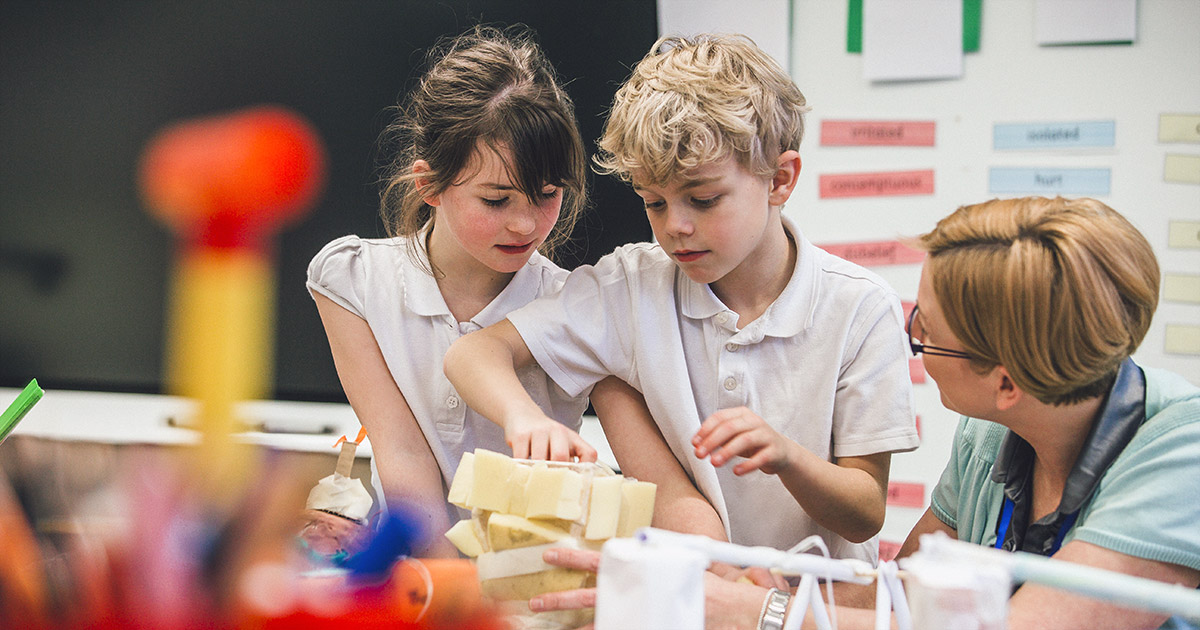
Great teachers are amazing people — constantly adapting, motivating, and inspiring young minds. Even to the best of teachers, though, it can seem difficult to take the time to cultivate what really matters when test time looms on the horizon. But studies show that instilling a sense of wonder and curiosity is far more important than test drills.
Tips for developing awe-inspiring moments in the classroom
Truly awesome learning can take place when you foster your students’ curiosity. Here’s some food for thought.
- Go beyond the classroom. The world is an awe-inspiring place so think outside of your classroom’s box. Remember that everything you teach your students inside your classroom is in preparation for what’s outside of it. Give students a safe space to connect what they are learning to the bigger picture. Also, create opportunities to bring the world into your classroom. Most students can recall the time they performed a dissection because it brought the outside world into the learning experience.
- Cultivate a culture of curiosity and imagination. Routines help to establish rules, boundaries, and expectations. When you begin promoting curiosity every day, it becomes the new normal. Allow students to take control of their curiosity and they will flourish.
- Place importance on questions instead of answers. We don’t live in a black-and-white world. Neither will your students after they graduate from your classroom. Focusing on the question prompts inquiry and allows for deep learning, encouraging students to search for creative solutions in the world around them, rather than trying to identify the right answer.
How to incorporate curiosity into your lessons
Make curiosity the goal
If you devoted time to answer all the curious questions, you could be at it for hours. Instead, offer students a non-disruptive way to foster their curiosity. For example, you could show an awe-inspiring photo or video to students. Then, give each student a strip of paper and ask them to illustrate by drawing or writing (or even suggesting a new option!) a question they have on the topic. Next, encourage other students to answer the “question” or ask a related question.
Another way to foster curiosity is with a “curiosity journal” stationed inside your classroom door or a stack of Post-it notes next to a “curiosity board.” Rather than disrupting a lesson each time a question arises, encourage students to quietly write their question inside the journal or on a Post-it. Then reserve a set amount of time every other day or once per week to review them (and do review them!). Regardless of how you do it, make curiosity a goal in each lesson.
Give popular topics a prominent place in your instruction
Start by discovering what students like with pointed questions, such as “when you have free time, what do you want to do the most?” Then use those interests to inform your lessons.
For example, if your students like Fortnite, you might have them design their own game (physically or with code) to illustrate their knowledge of a historical event or significant text. If your students show interest in the environment, you might develop a lesson that puts the students in charge of crafting a solution to an environmental problem or assisting in a service project. If students are obsessed with selfies, have each student take one, print it, and identify geometric elements, such as perpendicular lines or right angles. It’s all about focusing your lesson around their world and finding the awesome in the ordinary.
Show students what they are capable of
One of the best ways to illustrate awe is to highlight your students’ inner potential. Good lessons allow students to see what they are capable of and grow through their mistakes. Explain how penicillin was discovered by accident or how the invention of the microwave was stumbled upon unintentionally. Then, challenge them to come up with something of their own and celebrate the successes and the failures!
These ideas can be extended to educational programs that help promote interest in particular areas, such as STEAM. To truly achieve wonder, you may even try cross-discipline lessons, such as using art to examine scientific or engineering principles or applying mathematical concepts to artistic themes. The most important thing is to retain a sense of curiosity in your own learning journey. The best way to teach curiosity is to practice it!
Ashley gained a passion for all things writing by spending years teaching a high school English class. She founded Contenthusiast so that she could spend her days hovering over a keyboard. When she isn’t writing, you can find her traveling with family or buried in a book.
Categorized as: Tips for Teachers and Classroom Resources
Tagged as: Back to School Season, Engaging Activities, Mid-Career Teacher, New Teacher, Veteran Teacher
